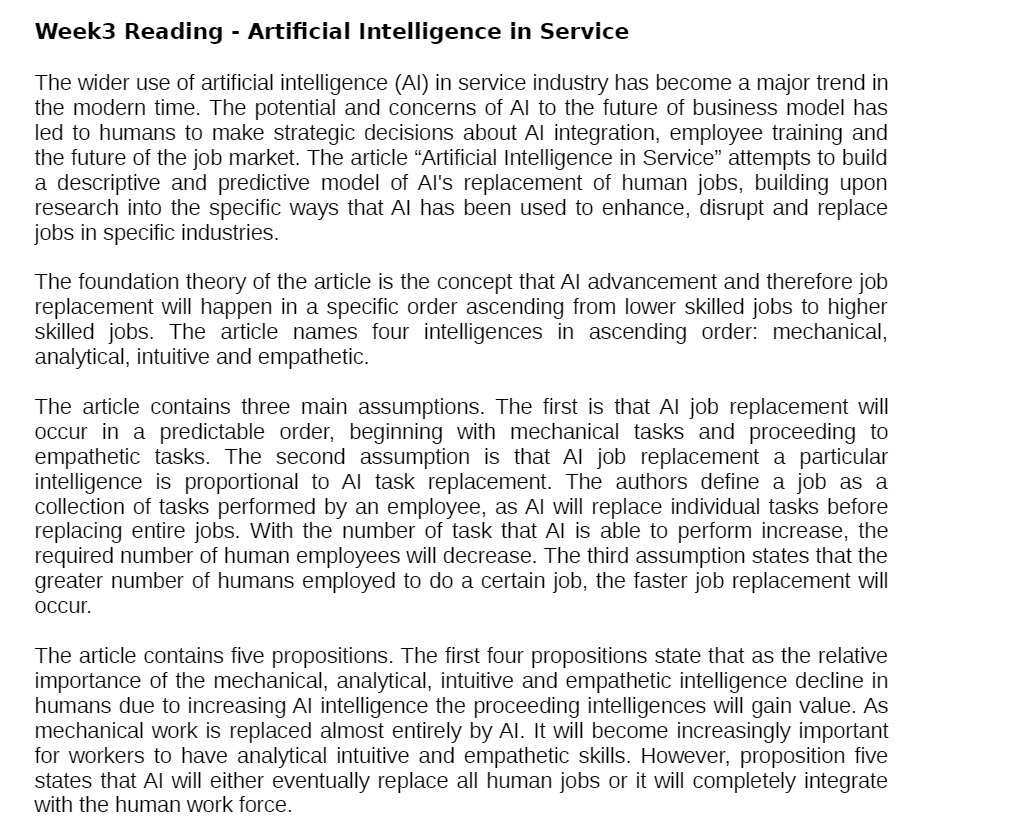Week3 Reading - Articial Intelligence in Service The wider use of artificial intelligence (Al) in service industry has become a major trend in the modern time. The potential and concerns of Al to the future of business model has led to humans to make strategic decisions about Al integration, employee training and the future of the job market. The article \"Artificial Intelligence in Service" attempts to build a descriptive and predictive model of Al's replacement of human jobs, building upon research into the specific ways that Al has been used to enhance, disrupt and replace jobs in specific industries. The foundation theory of the article is the concept that Al advancement and therefore job replacement will happen in a specific order ascending from lower skilled jobs to higher skilled jobs. The article names four intelligences in ascending order: mechanical, analytical, intuitive and empathetic. The article contains three main assumptions. The first is that Al job replacement will occur in a predictable order, beginning with mechanical tasks and proceeding to empathetic tasks. The second assumption is that Al job replacement a particular intelligence is proportional to Al task replacement. The authors define a job as a collection of tasks performed by an employee, as AI will replace individual tasks before replacing entire jobs. With the number of task that Al is able to perform increase, the required number of human employees will decrease. The third assumption states that the greater number of humans employed to do a certain job, the faster job replacement will occur The article contains five propositions. The first four propositions state that as the relative importance of the mechanical, analytical, intuitive and empathetic intelligence decline in humans due to increasing Al intelligence the proceeding intelligences will gain value. As mechanical work is replaced almost entirely by Al. It will become increasingly important for workers to have analytical intuitive and empathetic skills. However, proposition five states that AI will either eventually replace all human jobs or it will completely integrate with the human work force







